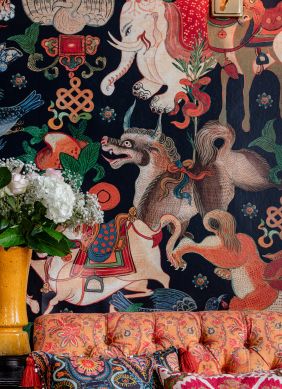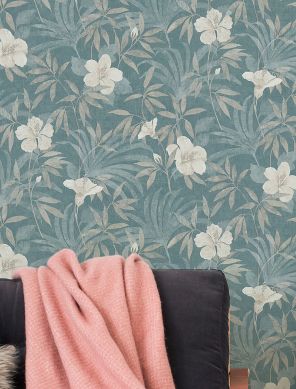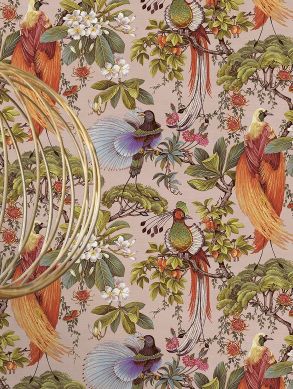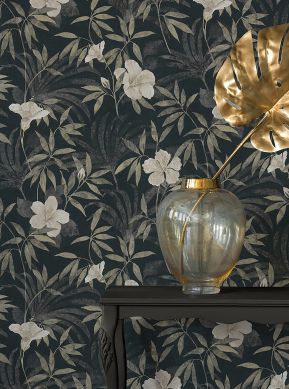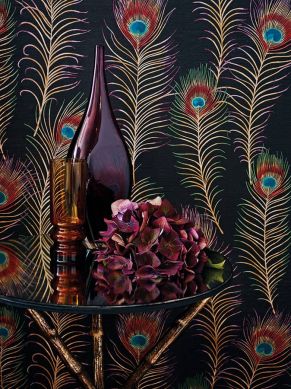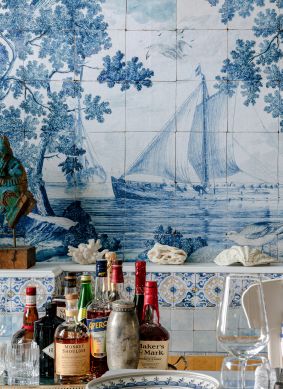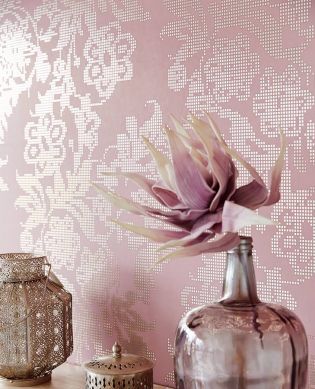Chinese Wallpaper
Chinese Wallpaper: The Guide
With the colonial expansion in the late 17th century, a flood of goods, including textiles, porcelain and artwork, started reaching European and American markets. For the first time ever, Western audiences enjoyed a taste of exclusive and sophisticated Chinese design styles - and it was love at first sight. Pagodas, dragons, cranes, and other Chinese motifs swept the continent, often imitated and interpreted through Western eyes to create a new, unique style known as “Chinoiserie”. Exotic and luxurious, mixing rich, deep colours and detailed patterns, Chinese-style wallpapers are still widely used in interior design today, bringing their unique oriental charm to traditional or eclectic decorating schemes.
Table of Contents
- What are the origins of Chinoiserie design?
- What looks can be achieved with Chinese-style wallpaper?
- Which rooms are suited for China-inspired wall décor?
- Which motifs can traditionally be found on Chinese wallpaper?
What are the origins of Chinoiserie design?
As Chinese goods and artwork began to be imported to France and the rest of Europe, it sparked a wave of orientalism that profoundly influenced art and design and still has relevance today.
A French term describing designs inspired by Chinese and Asian art
As the reach of Western economic power expanded, European merchants started importing Chinese porcelain, silk, and other luxury goods to Europe, igniting a fascination with all things Chinese. This phenomenon reached its peak in France, where artists and craftsmen began to incorporate Chinese motifs into their work. This blend of oriental styles seen from a European perspective took the name of “Chinoiserie”, the French word for “China-style”.
It’s closely associated with the Rococo period
The popularity of Chinoiserie grew rapidly across Europe and reached its peak in the 18th century, during the Rococo period which incorporated many Chinese-inspired motifs and themes. Both styles focused on leisure and pleasure and Chinoiserie Rococo often featured pagodas, dragons, and bamboo as well as Chinese landscapes and figures. It was popularised in France during the reign of Louis XV, who was known for his love of Chinese culture and art.
It relates to Europe’s and America’s fascination with exoticism and orientalism
As trade became more global, Asian art and luxury goods fascinated the upper classes who were captivated by the exotic and mysterious crafts coming from the East. Chinoiserie was a way to incorporate this style into European design, resulting in a Western interpretation of Chinese culture rather than an accurate reflection of its true aesthetics. Its influence on the decorative arts of the time was significant, and it continues to be a popular design genre today, particularly in interior design.
What looks can be achieved with Chinese-style wallpaper?
Unusual and flamboyant, Chinese-style wallpapers are the perfect way to add a splash of colour to minimalist interiors, spruce up eclectic looks, or provide an extra layer of luxury to opulent styles.
Colourful yet minimalist spaces
Minimalist interiors don’t need to be bland. A Chinese-style wallpaper is a fantastic way to add visual interest and texture to a room without overwhelming it. It’s best used as a focal point, on a wall that is free of furnishing or other distractions, keeping the rest of the design minimal. Stick to simple furniture pieces and a few key accessories to avoid cluttering the space and pick a model with a simple colour palette.
Eclectic rooms that mix styles
You can use the way contemporary culture sees Chinese design - with one foot in the past and the other in the future - to your advantage by paring a Chinoiserie wallpaper with modern or industrial furniture to create an eclectic and unique look. By choosing a traditional Chinese design featuring pagodas, sweeping mountain landscapes, or elegant cranes in a pond, you can create a new context that feels fresh and unexpected.
Oriental and opulent interiors
If you are planning to incorporate a Chinese-style wallpaper into an opulent design scheme with an exotic and oriental vibe, pick a model with an intricate pattern and lots of detail. Rich, deep colours are a staple of Chinese design and, when paired with metallic accents, can add to the opulent atmosphere. For extra exotic flair, include Asian-look accents like large vases, silk pillows, or a bamboo screen divider.
Which rooms are suited for China-inspired wall décor?
Luxurious, opulent and captivating, a Chinese wallpaper can elevate the style of a dining room or a hallway or help define a truly romantic and intimate WC.
A statement dining room
If you want to impress your guest and show off your flair for mixing classic elements with the unconventional, a statement wall featuring a Chinoiserie wallpaper in a bold pattern with an intricate pattern in red, black, and gold will help you create the luxurious and sophisticated atmosphere you are hoping to achieve. Add a dramatic chandelier or even some pendant lights for maximum effect.
An intimate WC
Although often small, the WC is a treasured space where to escape the world for a few brief moments and gather your thoughts. Chinese-inspired wall décor will help you create an intimate space that will feel like a hidden gem in your home. Use it on all walls to create a private ambience that and add plenty of mirrors to create the illusion of spaciousness.
A foyer that makes an impression
The importance of the foyer should never be underestimated as it sets the tone for the rest of your house. The hallway is an expression of your style and there is nothing better to make a statement than with a grand Chinese-style wallpaper. This provides a stunning first impression, particularly if the space is big enough to add some seating, such as a bench or a couple of upholstered chairs to welcome your guests.
Which motifs can traditionally be found on Chinese wallpaper?
As Chinese artifacts arrived in Europe, previously unknown motifs quickly became a standard in Western homes. Centuries later, dragons, pagodas, cranes, and precious lacquer finishes are still immensely popular in decorative Chinese wallpaper models.
Dragons
One of the most potent symbols of power and strength in Chinese culture, these mythical creatures are a common motif in Chinoiserie wallpaper, often depicted as elegant creatures with powerful and elongated bodies, sharp claws, and fierce expressions. As the Chinese consider dragons to bring good luck and fortune, they are often shown holding a pearl or a ball representing wealth and prosperity.
Pagodas
Both an important religious symbol and a common feature of Chinese architecture and landscapes, pagodas have fascinated Western audiences for centuries and are a classic element of Chinoiserie wall décor and art. Representing the connection between heaven and earth, their unique tiered design is thought to symbolise the ascent towards enlightenment as well as the protection against evil spirits in Buddhism.
Birds
Chinese culture and traditions show intense respect for and attention to birds. They are considered a symbol of good fortune and therefore often represented in Chinese home décor, including wallpaper, furniture, ceramics, and art. Amongst the most popular and celebrated birds used in Chinese-inspired wall décor are the phoenix and the crane, both emblems of longevity and prosperity.
Geometric patterns
Geometric patterns have been used in traditional Chinese design for millennia and their importance is frequently mirrored in contemporary Chinoiserie wallpaper. Chinese culture associates deep meaning with each geometrical element, for instance the square which signifies the earth and is often used to represent stability and balance, or the circle which symbolises heaven and conveys a sense of unity and perfection.
Chinese landscapes
Highly detailed and often depicting mountains, rivers, and forests, Chinese landscapes have long been an exceedingly popular theme. Taking a very different approach compared to European art styles, these landscapes are typically created using ink and watercolour on silk or paper. They impressed Western audiences so much that they became a standard motif on countless Chinoiserie wallpapers - and still are today.
Lacquer finishes
A resinous substance that is made from the sap of certain trees, lacquer is a type of decorative finish that is often used in Chinese design, applied to surfaces in multiple layers to create a high-gloss and durable finish. With its intricate designs and bold colours, this highly desirable decorative style is often associated with luxury and opulence. Its look and effect are frequently imitated on Chinese wallpaper to create a stylish and attractive effect.












































